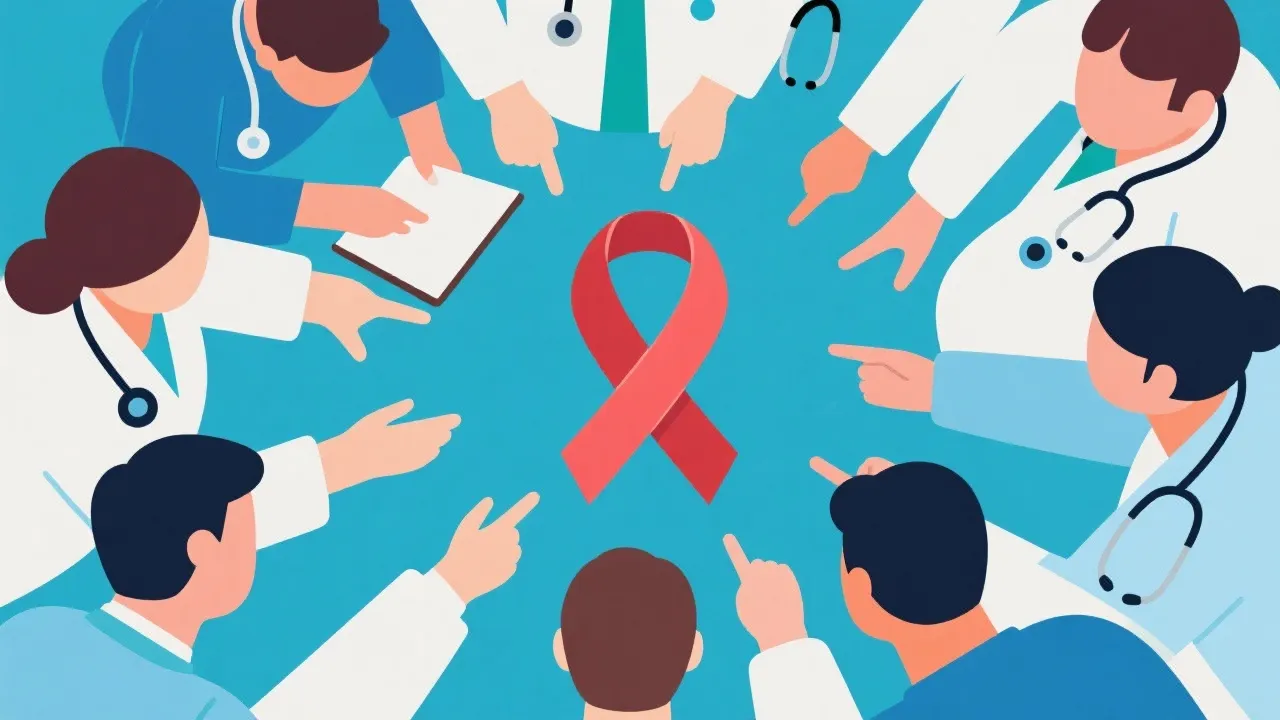This article examines the strategies developed to alleviate HIV/AIDS, focusing on professional methods and comprehensive approaches. The global health landscape has greatly evolved in response to HIV/AIDS, with a focus on strategic interventions that integrate prevention, treatment, and education. A nuanced understanding of these strategies offers a foundation for further advancements in public health.

In the arena of public health, the fight against HIV/AIDS has been a longstanding and evolving challenge. Efforts to alleviate this global epidemic have involved a multitude of strategies, each tailored to address different facets of prevention, treatment, and social education. This article examines the strategies developed to alleviate HIV/AIDS, emphasizing professional methods and comprehensive health initiatives. The complexities surrounding HIV/AIDS demand innovative and adaptive approaches, which not only highlight the importance of medical intervention but also underscore the need for community involvement and education. Understanding the historical context, demographic impacts, and social stigma associated with HIV/AIDS will further illuminate the importance of these strategies.
The Human Immunodeficiency Virus (HIV) targets the immune system, resulting in susceptibility to other infections, and progresses to Acquired Immunodeficiency Syndrome (AIDS) if untreated. This progression creates significant public health concerns due to complexity in management and prevention. Interventions are necessary globally, but regional adaptation is crucial for effectiveness. HIV/AIDS remains a major health challenge affecting millions worldwide, and varying cultural contexts and healthcare infrastructures necessitate the customization of strategies for different populations.
The scale of the epidemic is staggering. According to the World Health Organization, approximately 38 million people globally were living with HIV at the end of 2019, with over 1.7 million new infections reported that year alone. The epidemic does not affect all communities equally; marginalized groups, including men who have sex with men, people who inject drugs, and sex workers, bear a disproportionate burden. This demographic disparity emphasizes the need for tailored outreach and intervention strategies designed to reach those at highest risk.
Effective prevention strategies are the cornerstone of alleviating HIV/AIDS. Among the initiatives that have proven successful are:
Advancements in treatment have significantly improved life expectancy and quality of life for individuals living with HIV/AIDS:
Support systems and community engagement are integral to the alleviation of HIV/AIDS:
Global health organizations, in tandem with local governments, have established frameworks to manage HIV/AIDS through coordinated efforts:
| Global Initiative | Local Adaptation |
|---|---|
| UNAIDS 95-95-95 Target | Country-specific strategies to ensure that 95% of people with HIV know their status, 95% receive ART, and 95% achieve viral suppression. These goals challenge countries to rethink their health infrastructures, community outreach strategies, and resource allocation. |
| Global Fund | Funding allocation tailored to regional needs in capacity building and resource provision. By decentralizing resource distribution, the Global Fund empowers local governments to address their specific challenges and leverage available resources effectively. |
| Health System Strengthening Initiatives | Developing the healthcare workforce and infrastructure to improve service delivery, particularly in resource-limited settings. This ongoing support aims to build capacity and sustainability within healthcare systems, which is essential for long-term success against HIV/AIDS. |
| Partnerships with Local NGOs | Collaborating with local non-profits and community-based organizations to deliver targeted HIV interventions. These partnerships often harness grassroots knowledge and networks to enhance outreach and effectiveness. |
Despite progress, challenges remain, including disparities in healthcare access, evolving viral strains, and socioeconomic factors. Addressing these challenges requires a multifaceted strategy that encompasses innovation in treatment and prevention, as well as a commitment to addressing social determinants of health.
Access to healthcare services is inequitable, with marginalized populations facing significant barriers to receiving adequate care. Economic disparities, lack of education, and persistent stigma can deter individuals from seeking the necessary testing and treatment. Innovative service delivery models, such as mobile clinics and telehealth consultations, can bridge these gaps and provide services to those who are often excluded from the conventional healthcare system.
Technological advancements also pave the way for future initiatives. Digital health tools can enhance patient engagement, offer real-time monitoring, and provide educational resources. Mobile apps that facilitate anonymous testing, medication reminders, and provide information can empower users to take control of their health.
Future directions must include tailored approaches, focusing on research, innovation, and the continuous evaluation of programs to maintain momentum in the fight against HIV/AIDS. Collaborative efforts involving governments, healthcare providers, and community organizations promise to bolster the global response, ensuring all communities receive support and care.
In conclusion, the strategies developed to alleviate HIV/AIDS are multifaceted and require continuous collaboration among stakeholders to adapt to changing demographics and technology advancements. The journey toward eradicating HIV/AIDS demands innovation, compassion, and resilience, uniting global efforts for the health and wellbeing of all individuals impacted by this epidemic. Furthermore, sustained engagement from all sectors of society is essential to ensure that the progress made is not only maintained but expanded upon in the face of remaining disparities and challenges.
Explore the Tranquil Bliss of Idyllic Rural Retreats

Ultimate Countdown: The 20 Very Legendary Gaming Consoles Ever!

Affordable Full Mouth Dental Implants Near You

Discovering Springdale Estates

Embark on Effortless Adventures: Unveiling the Top in Adventures Made Easy Outdoor Equipment

Unlock the Full Potential of Your RAM 1500: Master the Art of Efficient Towing!

Dodge Ram: Redefining the Future of Full-Size Trucks with Unmatched Power and Innovation

Get New Phones Without Plans Easily

Smart Strategies to Slash Costs on Your Roof Replacement Endeavor
